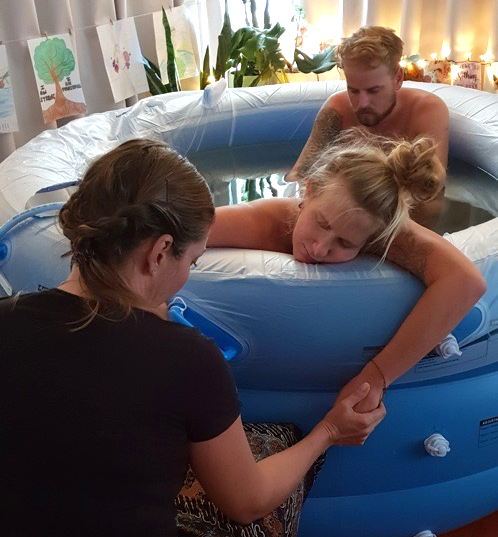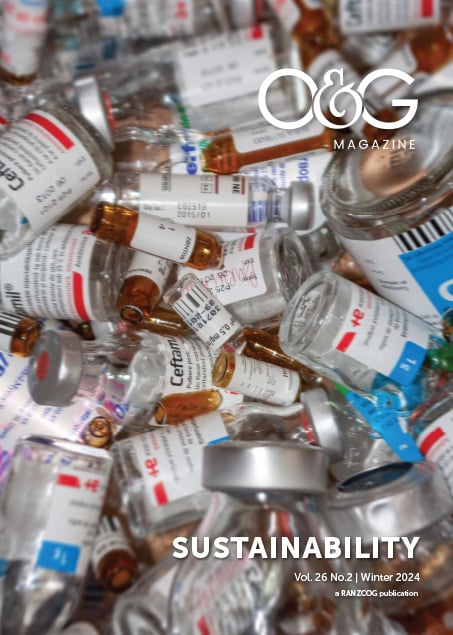The Australian College of Midwives (ACM), Australia’s peak professional body for midwives is at the forefront of promoting environmentally sustainable practices within the midwifery profession. ACM recognises the urgency of action to mitigate climate change and has taken significant steps to integrate sustainability into its operations and advocate for a greener future. This article describes ACM’s actions to promote sustainability among midwives and highlights the organisation’s initiatives in line with its environmentally conscious approach.
Environmental sustainability initiatives
ACM acknowledges the urgent need to address climate change and its impact on maternal health. In our submission on the National Health and Climate Strategy1, we emphasised the importance of midwives’ role in understanding and mitigating the effects of climate change. The organisation believes that midwives can play a crucial part in educating women, their families, and the profession about the impact of climate change on childbearing women and steps to reduce its impact.
Our approach is to emphasise the importance of protecting and supporting breastfeeding, especially during climate-related events. Citing the imperative to prioritise the wellbeing of women and children by mitigating the disproportionate impact of climate change shocks. By doing so, ACM believes that communities’ overall health and resilience can be improved.
ACM promotes breastfeeding as the best approach for infant feeding and nutrition. This position is reflected in ACM’s facilitation of the Baby Friendly Health Initiative11 (BFHI) program nationally. In line with the Australian National Breastfeeding Strategy and Beyond8, Priority 2.1, ACM recommends that the BFHI accreditation program be integrated into all maternity, newborn care facilities and community settings nationally to promote and sustain breastfeeding rates and thereby improve long-term health outcomes and reduce the excessive manufacturing and disposal of plastics required for artificial feeding.
Virtual assessments & reviews
ACM has embraced virtual platforms to reduce our carbon footprint and increase efficiency. The Breastfeeding Friendly Health Initiative (BFHI) assessments and Midwifery Practice Reviews (MPR) have transitioned to virtual platforms, eliminating the need for assessors and reviewers to travel long distances. This shift has significantly reduced the kilometres flown by assessors and reviewers, resulting in a substantial decrease in carbon emissions.
Remote work & digital solutions
In response to the COVID-19 pandemic and subsequent lockdowns, ACM implemented remote work policies. This enabled staff to work from home reducing commuting-related emissions and promoting a healthier work-life balance. ACM recognises that this shift was not only a response to the pandemic but also an opportunity to adopt more sustainable work practices. The organisation has embraced digital solutions, such as virtual meetings and online collaboration platforms, to minimise the need for physical travel and paper use, and office spaces to store paper-based records.
Digital publications & online education
ACM has made significant strides in reducing its paper usage by offering a digital version of its magazine, Australian Midwifery News (AMN), to its 5,300-plus members. This shift not only reduces waste but also allows for more accessible and timely information dissemination. ACM’s International Journal Women and Birth is the highest-ranking journal for Midwifery in the world, publishing on women’s health and maternity care. The editorial team have recently made the decision to be a primarily digital journal. Additionally, ACM has embraced online webinars and virtual courses over the past three years, minimising the environmental impact associated with in-person events. These initiatives have allowed ACM to reach a wider audience while reducing our carbon footprint.
Place of birth & environmental impact
Home birth is recognised as a setting associated with low environmental impact negligible waste9. The environmental benefits of home birth include reduced transportation emissions and resource consumption compared to hospital births. ACM acknowledges the ecological advantages of midwifery care, especially in home birth settings, and encourages midwives to prioritise sustainable practices in their work. Individual health providers’ ability to measure their waste impact and calculate emissions may lead to a stronger commitment to reduce carbon footprint and contribute to both the individual and collective organisation level climate strategy adherence resulting in a more significant impact1.

A home birth taking place in Woombye, Australia. L-R: Midwife Tani Paxton, Claire Farrelly and Andi Durkin. Photo: Midwife Terri Schaumberg
Leading by example
As a not-for-profit organisation, ACM holds itself to high environmental standards, aligning our values with being environmentally aware, sustainable, flexible, and forward-thinking. ACM encourages other peak health professional organisations to assess their environmental footprints and implement sustainable practices within their operations.
Clinical waste management is not standardised or measured nationally and there are barriers to recycling accessibility and capability in local, regional, and state jurisdictions across Australia, worsening with remoteness of geographical location1.
A recent study ‘The Green Maternity Project’ resulted in a successfully implemented midwifery-led program in postnatal ward waste reduction10. By sharing our experiences and successes as well as our vision for improvement, ACM aims to inspire others in the healthcare industry to adopt environmentally conscious approaches.
The Australian College of Midwives is dedicated to championing sustainability within the midwifery profession. Midwives provide care across the life course from pre-pregnancy, antenatal, labour and birth, postnatal and interconception periods. Scope of practice extends to sexual and reproductive health; child, family, and maternal health; and the first 1,000 days of life. Midwives are experts in the provision of primary maternity care and therefore provide a critical link to the establishment of a climate strategy that will impact across the lifespan1.
Drawing on the strengths of a collaborative network is the most effective way to advance climate and public health policy. This could involve developing a shared understanding of the importance of addressing climate change and its impact on maternal health, as well as identifying shared goals for emissions reduction and sustainable healthcare practices.
Engaging the health workforce collaboratively in conversations about climate change is an essential step towards climate action. Through virtual assessments and reviews, remote work policies, digital publications, and online education, we have reduced our carbon footprint and embraced sustainable practices at ACM. By promoting environmentally friendly initiatives and encouraging other organisations to follow suit, ACM is fostering a greener future for midwifery and maternal health. Although working towards climate solutions is ACM’s priority, this is also an opportunity for a multidisciplinary approach. ACM encourages doctors, other stakeholders and peak health professional organisations to consider their – and their practices – impact on the environment. You can calculate your environmental footprint and share this resource with your members.
Tani Paxton also wrote: An exploratory study of women and midwives’ perceptions of environmental waste management – home birth as climate action for Science Direct.
References
- Australian College of Midwives (2023). Climate Strategy Submission.
- United Nations. (2022). Sustainable Development Goals. Retrieved from THE 17 GOALS | Sustainable Development (un.org)
- Smith, J. (2019) A commentary on the carbon footprint of milk formula: harms to planetary health and policy implications.
- Karlsson, J. O. et al. (2019). The carbon footprint of breastmilk substitutes in comparison with breastfeeding. Journal of Cleaner Production, 222, 436–445. doi.org/10.1016/J.JCLEPRO.2019.03.043
- The Lancet (2016), The Lancet Breastfeeding Series. Breastfeeding 2023 (thelancet.com)
- Greenfeeding Worldwide. New updated PDF in English, 27 pages with active table of content and list of references with hyperlinks (Dec 8, 2023)
- Joffe, N., Webster, F., & Shenker, N. (2019). Support for breastfeeding is an environmental imperative. BMJ (Clinical research ed.), 367, l5646. doi.org/10.1136/bmj.l5646
- COAG Health Council (2019). The Australian National Breastfeeding Strategy: 2019 and Beyond.
- Paxton, T. K., Donnellan-Fernandes, R., & Hastie, C. (2023). An exploratory study of women and midwives’ perceptions of environmental waste management – home birth as climate action. Midwifery, 127, 103844. doi.org/10.1016/j.midw.2023.103844
- Vasilevski, V., Huynh, J., Whitehead, A., Noble, C., Machado, C., & Sweet, L. (2023). The Green Maternity project: A midwife-led initiative to promote correct waste segregation on an Australian postnatal ward. Journal of advanced nursing, 10.1111/jan.15789. Advance online publication. doi.org/10.1111/jan.15789
- Baby Friendly Health Initiative Australia (2023). Retrieved from bfhi.org.au






Leave a Reply